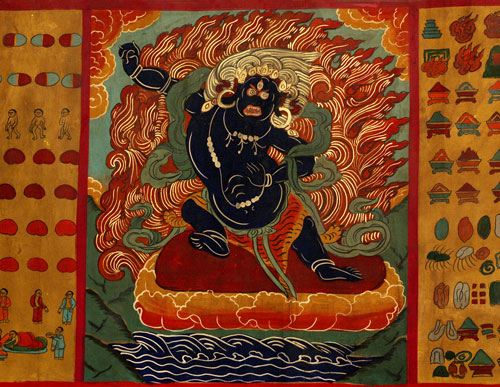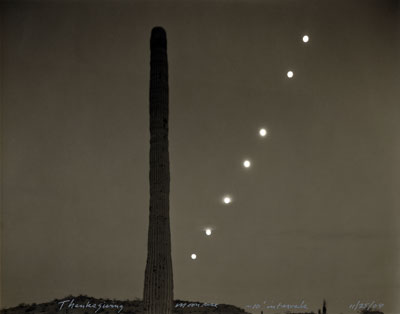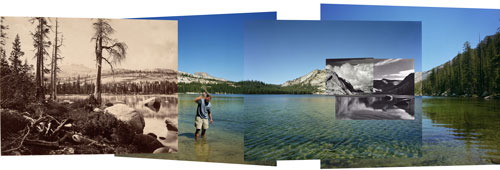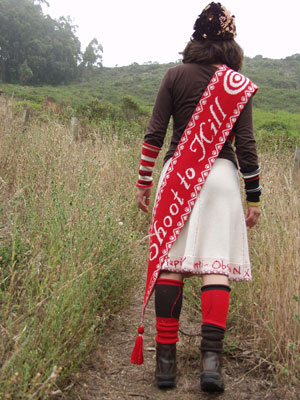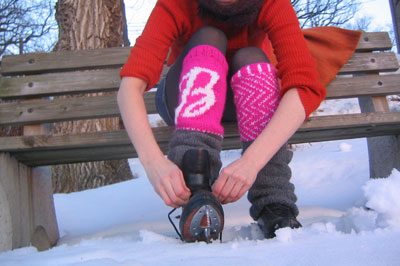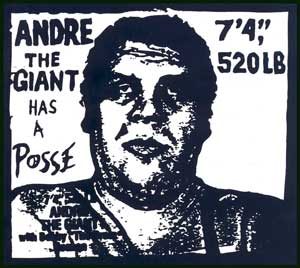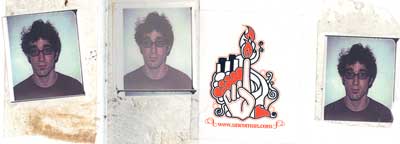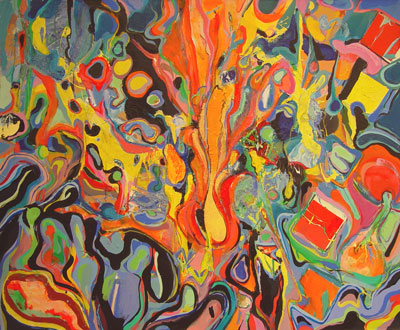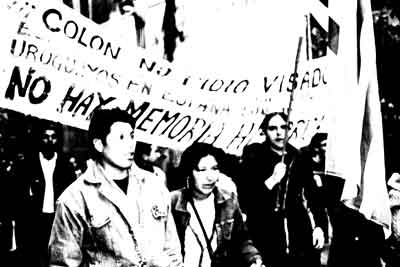








Exhibitions - Spring 2006
|
|
|
|
|
|
March 1 - April 6 |
|
| April 20 - June 5 |
|
|
Spencer Homick '06: Senior Exhibition Senior CIIS Exhibitions: |
| One-of-a-Kind: Art & Artifacts from the Permanent Collection
In conjunction with St. Lawrence University’s Sesquicentennial in 2006, the Richard F. Brush Art Gallery presents an exhibition of paintings, drawings, and other art objects and artifacts from the Permanent Collection. Three projects are featured in the exhibition. The first is a 15th-century Gothic panel painting of the figure of St. Lawrence with the gridiron. Recently conserved by Montserrat Le Mense at the Williamstown Art Conservation Center, the painting was presented to the University in 1907 by Frederic Everest Gunnison, son of Almon Gunnison, University president at that time. Le Mense’s research on the provenance of the painting indicates that it originally hung in a Franciscan monastery, La Rabida, in Palos de la Frontera, a southern Spanish port town from which Christopher Columbus sailed in 1492. Her lecture will describe the history of the painting and her extensive work to conserve it.
A significant component of the exhibition includes ethnographic objects and artifacts such as Yoruba and Baule carvings from Africa, a visionary painting by Amazonian shaman Pablo Amaringo, and Tibetan Buddhist thangka paintings. Students in Professor Dorothy Limouze’s fine arts course The Museum as Cultural Crossroads share their research on these pieces in a public presentation, exhibition text panels, and a longer printed brochure. According to the syllabus for the course, students explored the museum “as a largely western creation and as a lens through which the western world views other cultures.” Course topics included “the growth of museums in the eras of colonial empires and superpowers; the politics of collecting and public display; the role of museums in constructing and communicating cultural difference; and the new museum, as redefined by post-colonial and postmodern thought.” Students were also asked to problematize the notion of the exhibition title, “one-of-a-kind,” in light of art objects and artifacts created for western and/or tourist markets.
In addition, the exhibition includes recent gifts from St. Lawrence alumni and their families. In 2005, Melissa Harris donated a rare 18th-century painting that depicts Jain cosmology, in memory of Michael E. Hoffman ’64, a major benefactor of the Brush Gallery in the years after his graduation. Dr. Richard and Odile Leterrier ’51 Stern donated several drawings and paintings in the last five years by Christo, Larry Rivers, John Button, and John Kacere, among other New York artists of the late 20th century. With great sadness, the St. Lawrence community learned of Dick’s death on December 19, 2005. His warmth and generosity reflect the efforts of many individuals over the years who have made St. Lawrence University “one-of-a-kind.” The lecture and exhibition are funded in party by the Barnes Endowment Fund, with thanks also to Professor Emeritus Hugh '52 and Patricia Gunnison for their initial support of the conservation of St. Lawrence.
In May 2005, Brush Art Gallery Director Cathy Tedford and I began to talk about an exhibition that could be organized by a class I would be teaching in the fall. The course, The Museum as Cultural Crossroads, was created by me in 1993, in connection with the faculty curricular seminar, Cultural Encounters. In addition to being an upper level art history course, FA 325A satisfies one of two requirements in comparative global or transnational analysis within the Global Studies minor. The course is a critique of the museum in the post-colonial era, focussing on the politics of the collecting and public display of art from indigenous cultures of western Africa and Canada. For much of the term, the students read museological and anthropological writings by Douglas Cole, Annie E. Coombes, Carol Duncan, Donna Haraway, Ruth B. Phillips, Sally Price, and Christopher Steiner. Journal entries on the readings and essays written about trips to the National Gallery, Ottawa, and the Museum of Civilization, Hull, rounded out the semester. However, this was the first time that an exhibition could be included within the parameters of the course. In September, the students chose works from a large group of African, Asian, and Amazonian material in the Brush Art Gallery Permanent Collection. They began their research in stages, completing the bulk of the work on wall labels and longer brochure entries in November and December, and on Monday evening, January 30, 2006, at 7 p.m., students from the class presented their research to the public in gallery talks. The students’ research has unearthed information which will be valuable additions to what we know about these objects. Longer texts written by each of the students can be found in the exhibition brochures. African objects come first in the brochures, with essays written by Margaret Yoh ‘06, Allie Reece ’06, and Emily Broeman ’06. Their texts problematize the notion of authenticity in traditional African art, as well as preconceptions that the western public often has regarding the way African art should look. Andrew Feathers ‘07, Meghan Getsinger ’06, and Alexis Harrison ’06 have written about Tibetan thangkas (paintings on cloth) that have recently entered the University art collection. Their essays deal with the issues of interpreting complex subject matter in objects that have been removed from their original contexts, and with the problems of collecting Tibetan Art at a time when much material from that region is being exported through illicit channels. The final essay, by Danielle Devereaux ’06, concerns a painting by the artist Pablo Amaringo. This beautiful work syncretizes indigenous shamanic practice and shamanic visions in a landscape composition which is “western” in conception. I congratulate all of the students on their hard work and their many interesting discoveries. And most of all, I thank Brush Art Gallery Director Cathy Tedford and Assistant Director Carole Mathey for their help with this project, from beginning to end. Dorothy Limouze Time Studies:
The work in this exhibition comes from two projects. The panoramas were made for Yosemite in Time, a collaboration among writer Rebecca Solnit, photographer Byron Wolfe, and myself. The project revisited and re-photographed sites of historic photographs made in Yosemite National Park. Our purpose was to understand how famous photographs had guided our interpretations of the land and our conceptions of wilderness, and how we might visualize the relationship between change and time. In the process, we discovered that photographs turn the natural world into a kind of nature/culture/time coordinate system for tracking different eras. Landscape photographs become maps in four dimensions, capable of folding and unfolding an experience of time. The process of making each photograph provided a means to rediscover the place in spite of its iconographic history.
The second project, entitled Time Studies, was begun last year in response to a question, “If photographs depict a moment in time, how long is a moment?” A photograph is usually metered in fractions of a second, but many of these images were exposed over periods ranging from ten minutes to two days, recording phenomena difficult to experience as a single or discrete event. The result is another perspective regarding duration or rates of change.
Together, the two projects explore several interesting questions. How do we visualize the relationship between time, space, and change? Is the measure of time a constant, or does change itself become the true measure of time? Can we count on either space or time to be immutable? What if time is not a simple flow from past to present; can it be experienced as flowing backwards? Can this perception alter the past as well as the future? -MK Mark Klett graduated from St. Lawrence University in 1974. The exhibition and lecture are funded in part by the Barnes Endowment Fund. The Workmanship of Risk
The exhibition at St. Lawrence University takes its title from critic Polly Ullrich’s 1998 New Art Examiner essay entitled “The Workmanship of Risk: The Re-emergence of Handcraft in Postmodern Art,” which describes how handcrafts in contemporary art can be radical. The Workmanship of Risk presents works that are handmade for conceptual, not utilitarian, purposes. Juxtaposing knitting with mechanically reproduced media, needlepoint with politics, and sewing with social critique, the exhibition includes:
-Sabrina Gschwandtner
The exhibition curator, Sabrina Gschwandtner, is a New York City-based artist who works with film, video and textiles. Graduating with honors from Brown University with a degree in art/semiotics, she also studied with Harvard Film Archive founder Vlada Petric at Harvard University and with artist VALIE EXPORT at the Sommerakademie fur Bildende Kunst in Salzburg, Austria. Gschwandtner is currently pursuing an MFA at Bard College. Her artwork has been exhibited at the 2001 Venice Biennale, SculptureCenter, Socrates Sculpture Park, Anthology Film Archives, Artists Space, and the Austrian Film Museum, among other venues. In 2004, she was awarded a residency at the MacDowell Colony and is writing a book that profiles people doing interesting things in knitting, to be published in the fall of 2007 by Stewart, Tabori & Chang.
Gschwandtner is the founder of KnitKnit, an artist’s publication that focuses on the intersections between fine art and handcraft in all media. Published twice per year, KnitKnit includes interviews, profiles, articles, reviews, and drawings. Through collaboration, she and other artists organize receptions, film and video screenings, art exhibitions, and other events. Cat Mazza is a New York-based artist who founded microRevolt, which creates art projects that combine knitting, machines, and digital social networks to initiate discussion about the international sweatshop crisis. Her recent exhibitions include Prix Ars Electronica, Linz, Austria; SESI Gallery, São Paulo, Brazil; Fuzzy Logic at the Futuresonic Festival in Manchester, UK; and The Upgrade! International at Eyebeam, New York. Images of the exhibition Special thanks to Carole Mathey, assistant gallery director and knit-o-latrix. The Gallery Has A Posse: Contemporary Sticker Art
I’ve been debating whether or not STICKERS are the new Currier & Ives. Art for everybody: democratic, cheap, ephemeral, transient. Run them through a Xerox machine at Kinko’s, or send a 300 dpi jpeg to The Sticker Guy. Paper or vinyl. B/W or color. One-of-a-kind stickers—hand painted with a brush or Sharpie, D-I-Y, poems by JJ, “I can’t do crossword puzzles because the open L e t t e r s p a c i n g bothers me.” U.S. Postal Service Priority Mail or Deutsch Post signature stickers—PG III: The Legend—or other messages: “Figura B: todo es justo en amor y guer” and “Rap Music Gods ate thier oats! TWERPS AREA RIOT!” HELLO, my name is Goner, RAMBO, Mickey Flight! ... Stickers that sell music: DJ Jester/The Filipino Fist, Cancer Bats, Struck by Truth, Astroboy, Deathless… Stickers that sell products/services/attitude: YJ STINGER Extreme Energy Drink, 42 Below/New Zealand Vodka, LOLA CREW 4 LIFE skateboards, Missbehave clothing, Sherbert Magazine, GoGorilla Media, Saved tattoos… Social/political stickers about GWB and the war (REGIME CHANGE, IRAK, Drop BUSH, Not BOMBS), SARS, animal rights and the environment (I shot Bambi’s mom ©Plasma Slugs and mission 1: piss on a SUV), globalization (Corporate Vandals Not Welcome), terrorism (Jihad for President 2004), and the nature of reality (OCTAGOD). Abstract stickers of eyes, hands, faces, four-leaf clovers, ants, flies, mandala-like circles and squares, plant forms, robots, sheep, and tender bunnies. Tattoo from Fantasy Island. Anonymous guy taped color copies of what-looked-to-be his passport photo on light posts and other surfaces all over Chelsea and Soho. Sticker artists + Art stickers: PlAsmA SluGs, Kaiju Big Battel, RobotsWillKill, Uneek, Wreckles, Asop, CATV, Skypager, Skarekroe, Visual Narcotics, El Toro, orkid man, 5003, Chair Dog, Certified Fluxus Free Zone, The Poo Syndicate, Hek Tad, Matt: Siren, Dalek… OBEY GIANT and the bootlegs: Andre the Giant, Vinny Raffa, Nicotina, Bea Arthur, [the] Dali Lama (sic), Flat Eric, Mini Me, and Optimus Prime each has a posse. Members of the SLU sticker acquisition committee scour the streets of New York City, Berlin, Toronto, San Francisco, and Moscow to find exquisite gems of creativity. The most coveted stickers are high out of reach, and our aluminum stepladder gets too heavy to lug around, so we stand on trash cans instead. Brittle fingers in November, we take a break to warm up at the Half King. “Optimistic acts of faith,” Carole observes. It’s true. There’s something intimate and heartwarming in these stickers, each one put up by hand. Personal responses to oftentimes harsh, chaotic environments and times. On PEEL’s SLAPS Stickerhead Forum, delOR razzes me, “keep it gangsta, and on the streets.” Zen sez, “the whole idea is not to ask... its to do... teacher man... thats what makes the difference... your asking about it. Just do it. Like Mikey.” And wharfrat responds, “Fat Mikey has a posse!” -Cathy Tedford
DO [SOMETHING/OBEY] People need & see things, incessantly. Walk these city streets: two straight lines cannot enclose or animé a space: as origami has insides and inside its folds, also: it has wings made from the making of its wings: it flies only if on fire and flies best in a frigid fall day: that’s the thermal physics of this city: rambling text of tags, men in drag: Nike Nike Prada bag: the streets run straight to make paid-for space: upwards at their edges are walls a crime to art on: unless for selling something else: pomegranate juice, community, fruit-infused vodka from the former eastern regime: slap-stick this spectacle with your own situationism: be enthusiastic: preexisting aesthetic elements in the winedark boulevards, the sunrise [something/obeys] among them: your First Amendment must be adhesive against search & seizure from these streets: this gallery: it is forbidden to be forbid: your Fourth Amendment only [something/obeys] its own profligeration without profit: you’re owning your own looking: move ahead: see what you can make of it. -Robert Strong, author of Puritan Spectacle (Elixir Press, 2006) Special TX to Carole Mathey, Spencer Homick ’06, and Suzi Matthews '92.
Barnes Endowment Annual Juried
All St. Lawrence students are eligible to enter up to four works of art in any media on Thursday, April 13 from 10:00 a.m. to 5:00 p.m. and on Friday, April 14 from 10:00 a.m. to 5:00 p.m. Please join us for the opening reception on Thursday, April 20, at 7:00 p.m. The exhibition is juried by Greg Stahly, Department of Fine Arts, SUNY Potsdam, who will give a lecture in Griffiths 123 on Wednesday, April 10, at 6:00 p.m. The exhibition is supported by the Carlyle and Betty Barnes Endowment and the Jeanne Scribner Cashin Endowment for Fine Arts. Loan agreement forms, 2006 Annual Student Art Exhibition top
of page
I love art, and I love science. The two subjects are opposites of each other, and I am not at all interested in working in one without the other. I lean a little more towards art, however, because for me, it is easier to create in art than in science. The institution of sequential, logical subjects requires certain abilities my displaced attention span lacks, but I understand science, and I’m absolutely excited to have found a way to approach science through art. I honestly never thought I’d be interested in learning calculus or C++ after my undergraduate education. Because I found the right medium, I can justify learning these subjects. My work in this exhibition falls into two distinct categories: art stemming from an aesthetic process and art stemming from a scientific process. The visualized music and computer pieces were the result of long and complex processes. The other pieces were made out of the sheer enjoyment of approaching an open canvas and leaving it resolved. Robert Metcalfe, inventor of Ethernet, once said, “Invention is a flower, innovation is a weed.” From that quote, I realized that no matter the medium, creativity means always growing. Since growth seems to be a recurring subject in some of my work, I feel that it is an appropriate theme for this exhibition. -SH Trini to de Bone!
In the spring of 2005, I participated in the Trinidad study abroad program along with six other students from St. Lawrence, nine students from Pacific Lutheran University, and three students from Trinidad and Tobago (T&T). I attended the University of the West Indies where I was enrolled in two classes, Pan Theory & Practice and Introduction to the Study of Religion. For four days during the beginning of the semester, I stayed with a Trinidadian family who showed me their neighborhood and gave me my first taste of life on the island. As part of the program, I learned about T&T culture and society
through outings to various diverse cultural events, one of which
was the annual Carnival celebration, a national holiday that takes
place the Tuesday before Ash Wednesday. For Carnival, everyone
gets up and dressed in costumes to have fun in the streets of Port-of-Spain,
Trinidad’s capital, from 6 a.m. to about 6 p.m. or even later.
This was the biggest celebration I had ever participated in, and
it was by far the best! As crazy as we might seem to be I was very encouraged by the diversity I saw on the island and
how, regardless of descent, each person was first Trinidadian.
Being a true Trini is not about outside appearance; it’s
about the love Trinidadians have for the country. Lavapiès
When I step off the metro in Lavapiés, I am immediately struck by its polyphony. With people from more than fifty nations residing in this small, old-quarter in the heart of Madrid, the rhythms - of its music, its language, of life - commingle intimately. The motley assortment of colors and styles of dress are interwoven to produce a social fabric all its own. Small children kick a partially deflated soccer ball in the plaza or the small corner where the sidewalk widens briefly. Old women sit on park benches, it seems for days at a time. Arab tea shops are situated next to Indian restaurants, next to shops selling African crafts, next to phone houses advertising discounted rates to call Latin America, next to jazz bars. South Asian men play Cricket in one plaza; Sub-Saharan African men play soccer in another. Women pull little shopping carts or push strollers up and down the steep, cobblestone streets. Someone has a boom box in the plaza playing cumbias, or sambas, or punk music. A group of middle-aged men sit around, drinking liters of beer until the cops show up. The police are there a lot. Lavapiés is a concrete local space where the interplay of many global processes can be discussed. These photographs speak to the gendering of space in the neighborhood, urban resistance, and Spain's immigration policies in the context of the capitalist world economy. Lavapiés is a pocket of the Global South tucked in the middle of a major metropolis of the Global North. From this focal point, there are thousands of threads stretching outwards, connecting Madrid to other neighborhoods, other cities, and other countries throughout the world and to the particular conditions that provoked their peoples to seek a different life in Spain. Lavapiés- like the global political system in which it is situated and reflects- resists simple, regular, and static explanations both for the way things are and the way they should be. As such it is a prime location for understanding the way that gender interacts with race, class, and nationalism in the capitalist world economy. There is an intense beauty in the way that the neighborhood so strongly asserts its heterogeneity in the face of strong currents of homogenization. It is a place where imagination, creativity, and a deep, forceful impetus for justice continue to thrive. While McDonalds and Starbucks continue to open up shop all over Madrid so everyone can get the burger and latté they know so well, Lavapiés maintains much of its spunk and spontaneity. -JS
top of page All exhibitions and related educational programs are free and open to the public. The Gallery welcomes individuals and groups for guided tours; please call (315) 229-5174 for information.
|
| top of page |



